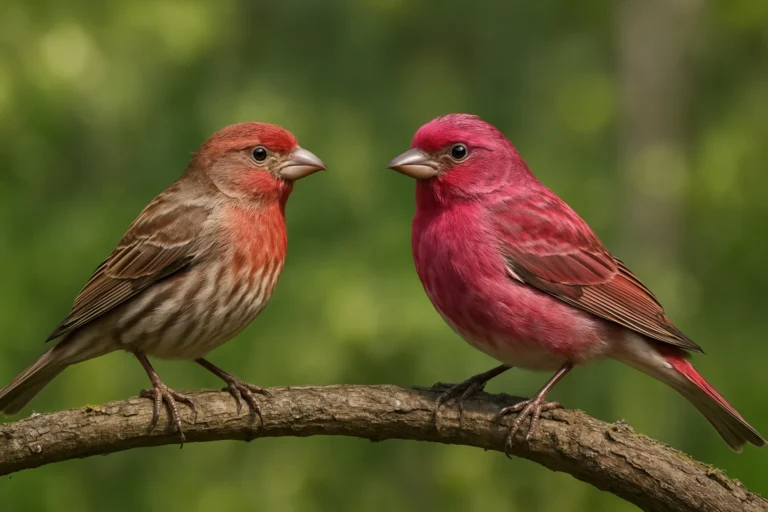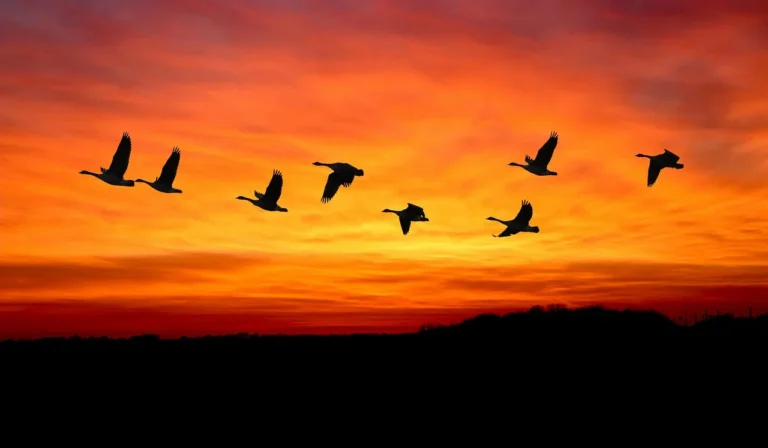Courtship is a common behavior in the animal kingdom. If you’re an enthusiastic birdwatcher, at some point of your journey, you must have wondered, “How do birds mate?” If yes, then you’re not alone. In fact, we always find new birders asking this question. Why is it important to learn about the romantic life of avians? Because it adds a fascinating layer to the hobby. After all, as amazing as birds are, their mating behaviors are just as fascinating.
Like humans, birds also need to engage in what we call ‘love-making’ to survive and continue their species. Therefore, they approach reproduction in ways that are both practical and beautifully complex. For instance, some show elaborate courtship dances, while others have brief yet effective mating rituals. Keep scrolling down the article if you’re eager to learn more.
Today, we’ll explore the physical mating process and the courtship behaviors that come before and after.
What Does Bird Mating Really Mean?
Before moving forward, let’s first establish the true definition of bird mating. In simple words, it is the entire process through which our feathered friends reproduce. This includes:
- Courtship behavior
- Fertilization
- Parenting (In many birds, at least)
But don’t assume that it’s as simple as that. In the real world, this is a complex biological function involving a little performance, competition, and commitment. Even in some species, mating isn’t just about looking for a partner. It’s about proving that you’re a perfect match. And this is what has led to some of the most incredible behaviors in the avian world.
How Do Birds Mate? (The Physical Process)
It’s time to dig a bit deeper into the biological basics. Birds’ mating process is quite different from what we see in mammals. You will be surprised to know that most of our flying companions don’t have external sex organs like most other animals. Instead, most birds have a cloaca, a single opening that they use for digestion, urination, and reproduction.
This little opening swells with sperm when a male is ready to mate. Similarly, the cloaca in females becomes more receptive during the mating season. This is when the magical “cloacal kiss” happens. It is a sort of romantic act where both partners align their cloacas. This process, however, isn’t very long lasting, as it takes only a few seconds, during which the male transfers sperm to the female. This sperm then travels to the female’s oviduct where fertilization of the egg occurs.
But wait a minute. This isn’t the whole story, as some avians don’t mate through cloacal kissing. While most birds don’t have penises, there are a few surprising exceptions. So, do birds have penises? Let’s take a closer look. Interestingly, males in ducks (Anatidae) and ostriches (Struthio camelus) do have penises that they use for internal fertilization. In other words, this is basic bird anatomy that differs in these species.
Bird Mating Behavior: The Art of Courtship
Do you think that our feathered friends get directly to the point of cloacal kissing? Not at all. There’s often a whole ritual from elaborate to comical or even downright charming. You know what? This is where birdwatching becomes fun, as most of the action occurs here.
Courtship behavior revolves around:
- Attracting a mate
- Demonstrating the strength and health
- Strengthening the bond between pair (Especially in monogamous species)
Courtship usually involves singing, dancing, gift-giving (yes, you read it right), and even color-changing. However, it depends on the species. Let’s discuss each of these rituals in a bit more detail:
1. Songs and Vocal Performances
Have you ever heard the melodies of a bird and pondered why it is singing? There are several reasons why birds sing, and one of them is, of course, attracting the opposite gender. Males use their beautiful voices to attract females. For you, these complex tunes might just be pretty, but for male avians, they signal fitness, territory ownership, and readiness to mate. Take the Northern mockingbird (Mimus polyglottos), for example. They’re equipped with the incredible capability to mimic the calls of other birds (sometimes even mechanical sounds) to put on an elaborate performance.
2. Dances and Displays
The mating world of birds keeps getting more and interesting. Get ready to be surprised as you’re going to learn that some of our flying companions take stage quite literally. The bird-of-paradise (Paradisaeidae), for instance, showcases fancy dance moves and unusual feather displays to catch the attention of a potential mate. The process starts with meticulously cleaning the display area. Later, it performs intricate dances, puffs feathers, flips upside down, and makes odd sounds.
3. Gift-Giving and Nesting Skills
Our flying companions are not just vocal performers or dancers. Sometimes, they use more intelligent (and cute) methods to win the heart of the opposite gender. In species such as the satin bowerbird (Ptilonorhynchus violaceus), males build elaborate bowers and decorate them with blue objects like feathers, berries, and even plastic to charm a female. It’s nothing less than a DIY bachelor pad.
4. Color Changes and Feather Displays
Last but not least, colorful plumage is another interesting way some feathered friends signal their readiness for mating. The most common and amazing example of this mating behavior is that of the male peacock (Pavo cristatus). He fans out its radiant tail feathers in a hypnotic display, vibrating them to produce low-frequency sounds known as “infrasound”. Females, on the other hand, can detect this clue from a distance. The same type of mating behavior can also be seen in duck species, with males displaying even more vivid colors during the season.
Mating Systems in the World of Birds
The love life of avians is an intriguing topic. In their world, different species follow varying mating systems, depending on their instincts, environment, and survival needs. Some prefer loyalty to one partner only (Monogamy), while others stay flexible (Polygamy). These are the systems that shape how our feathered friends pick their mates, raise chicks, and compete during the mating season. Let’s take a closer look at them:
Monogamy
About 90% of our flying companions are monogamous. This includes birds like swans (Cygnus spp.), geese (Anser spp.), and pigeons (Columba livia). That is to say, they are birdie soulmates, as pairs often prioritize staying together for life or at least for the mating season. However, extra-pair copulations are not uncommon in monogamous birds.
Polygamy
When it comes to relationship status, some avians like to keep their options open. They can sometimes be polygynous, meaning that one male mates with multiple females. This behavior is more obvious in birds like red-winged blackbirds (Agelaius phoeniceus). Others, like the spotted sandpiper (Actitis macularius), can be polyandrous, with one female forming bonds with multiple males.
When Is Bird Mating Season?
In avians, mating is usually seasonal. Different factors like daylight (photoperiod), temperature, and food availability influence the process. Therefore, spring is the prime time for bird mating in many regions. That said, as a birdwatcher, this time of the year is lucky for you, as you can witness your feathered friends dancing, singing, changing colors, and exhibiting other intriguing behaviors. Here are a few examples of different birds and their typical mating seasons:
- American robins (Turdus migratorius) start mating in April through July
- Peregrine falcons (Falco peregrinus) mate in last March through May
- Emperor penguins (Aptenodytes forsteri) engage in courtship during the months of May or June
- Bald eagles (Haliaeetus leucocephalus) prefer mating in October through March
- Common sparrows (Passer domesticus) breed through March and late August
Nesting and After-Mating Behavior
Once the mating process is successful, the female lays fertilized eggs in nests. This is where the nesting behavior begins. It varies widely, as you can see below:
- Robins build cup-shaped nests
- Woodpeckers carve out tree cavities
- Penguins carry eggs on their feet
- Weaver birds (Ploceus spp.) create hanging nests
- Ospreys (Pandion haliaetus) build large stick nests near water bodies
Avians also show amazing parenting behaviors. In species like emperor penguins, the male is responsible for incubation while the female hunts. On the contrary, some species are brood parasites, which means that females lay eggs in other birds’ nests and let the host parents do all the work. For instance, cuckoos (Cuculidae family) come under this category.
In Conclusion: The Fascinating World of Bird Mating
In short, the love life of birds is both charming and complex. From the breathtaking courtship rituals to the romantic cloacal kiss, nesting, and parenting, our feathered friends have evolved an astonishing range of strategies to attract mates and reproduce. As a birder, observing and understanding these behaviors will open new doors of knowledge and appreciation for the avian world for you.
And also, don’t forget to stay in touch to read more insightful blogs.


